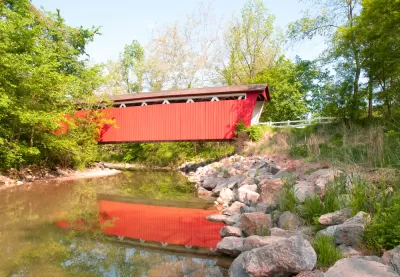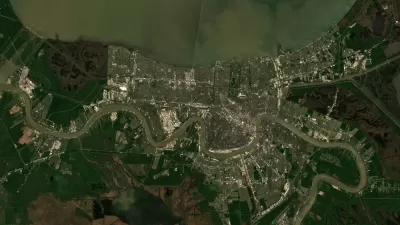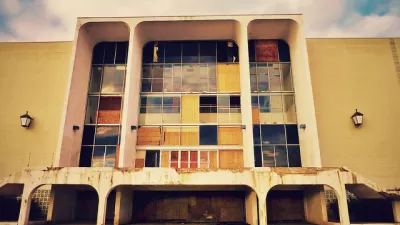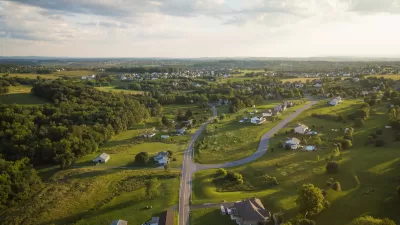A recent spate of articles has pondered the concepts and planning strategies at work in the region of the country described as the Rust Belt.

Scott Suttell begins this survey by analyzing whether the term "Rust Belt" is pejorative, outdated and unfairly describing the industrial Midwest "with an unflattering label that misleads the rest of the country about what’s happening here."
Suttell considers two opposing viewpoints on the use of the word, before deciding not to use the term in his own writing, and asking for ideas for a replacement.
An article by Alexia Fernandez Campbell goes further than considering the demise of the term "Rust Belt," instead suggesting that part of the region commonly referred to as the Rust Belt needs to embrace decline. In effect: that parts of the Rust belt "need to die off." That article presents an interview with Galen Newman, an assistant professor of landscape architecture and urban planning at Texas A&M, who, along with Justin Hollander of Tufts University, are leading researchers in the concepts of "smart decline." Contrast smart decline with the more common talking point of smart growth, and it's easy to understand why some communities aren't rushing to embrace decline.
Jason Segedy, blogger at Notes from the Underground, has written in response to that interview, admitting a visceral response to the ideas of smart decline before presenting a rational case. The article is long and in-depth, addressing a series of questions about the future of Rust Belt cities in thorough detail.
FULL STORY: Do Parts of the Rust Belt Need to Die Off?

Planetizen Federal Action Tracker
A weekly monitor of how Trump’s orders and actions are impacting planners and planning in America.

Congressman Proposes Bill to Rename DC Metro “Trump Train”
The Make Autorail Great Again Act would withhold federal funding to the system until the Washington Metropolitan Area Transit Authority (WMATA), rebrands as the Washington Metropolitan Authority for Greater Access (WMAGA).

The Simple Legislative Tool Transforming Vacant Downtowns
In California, Michigan and Georgia, an easy win is bringing dollars — and delight — back to city centers.

The States Losing Rural Delivery Rooms at an Alarming Pace
In some states, as few as 9% of rural hospitals still deliver babies. As a result, rising pre-term births, no adequate pre-term care and "harrowing" close calls are a growing reality.

The Small South Asian Republic Going all in on EVs
Thanks to one simple policy change less than five years ago, 65% of new cars in this Himalayan country are now electric.

DC Backpedals on Bike Lane Protection, Swaps Barriers for Paint
Citing aesthetic concerns, the city is removing the concrete barriers and flexposts that once separated Arizona Avenue cyclists from motor vehicles.
Urban Design for Planners 1: Software Tools
This six-course series explores essential urban design concepts using open source software and equips planners with the tools they need to participate fully in the urban design process.
Planning for Universal Design
Learn the tools for implementing Universal Design in planning regulations.
Smith Gee Studio
City of Charlotte
City of Camden Redevelopment Agency
City of Astoria
Transportation Research & Education Center (TREC) at Portland State University
US High Speed Rail Association
City of Camden Redevelopment Agency
Municipality of Princeton (NJ)





























